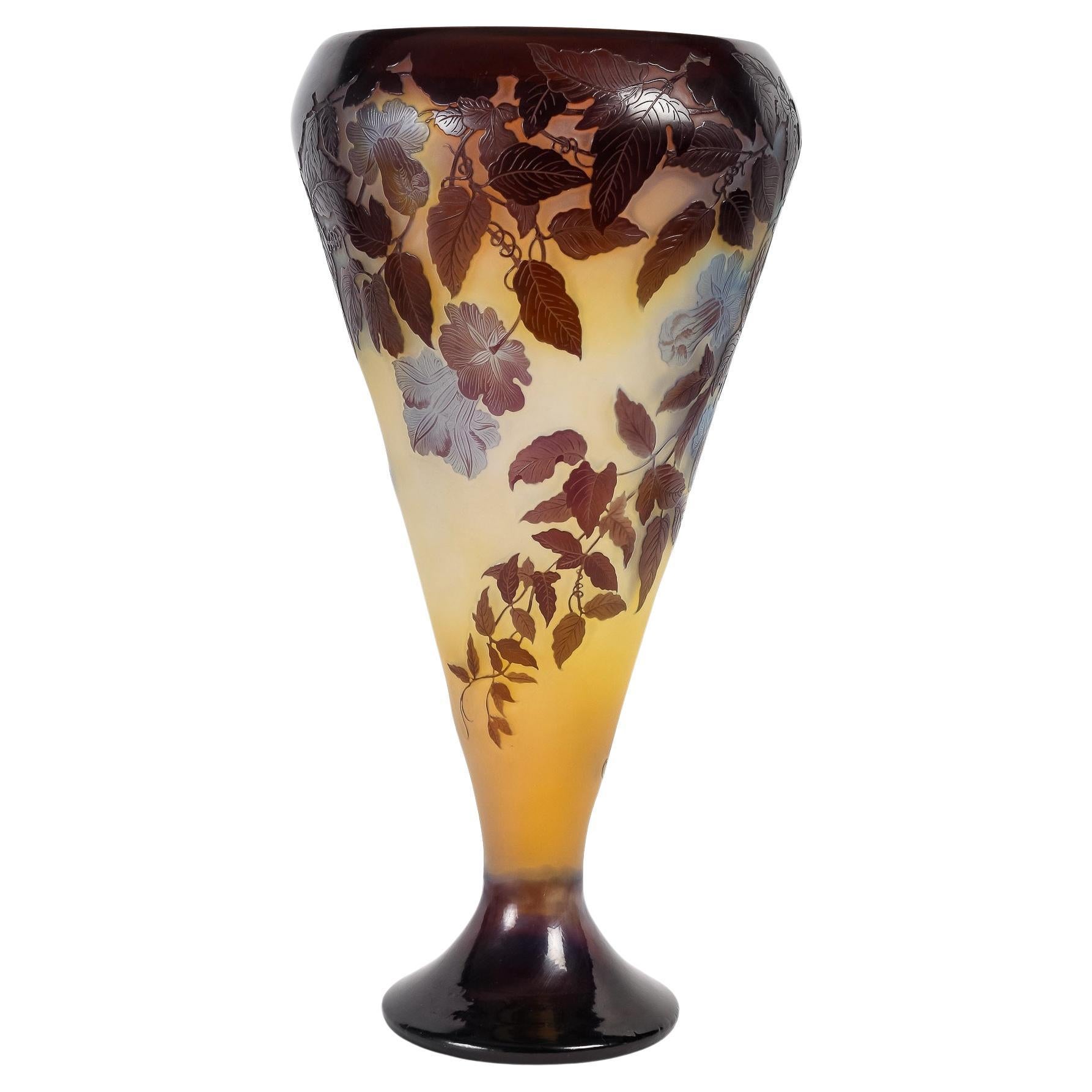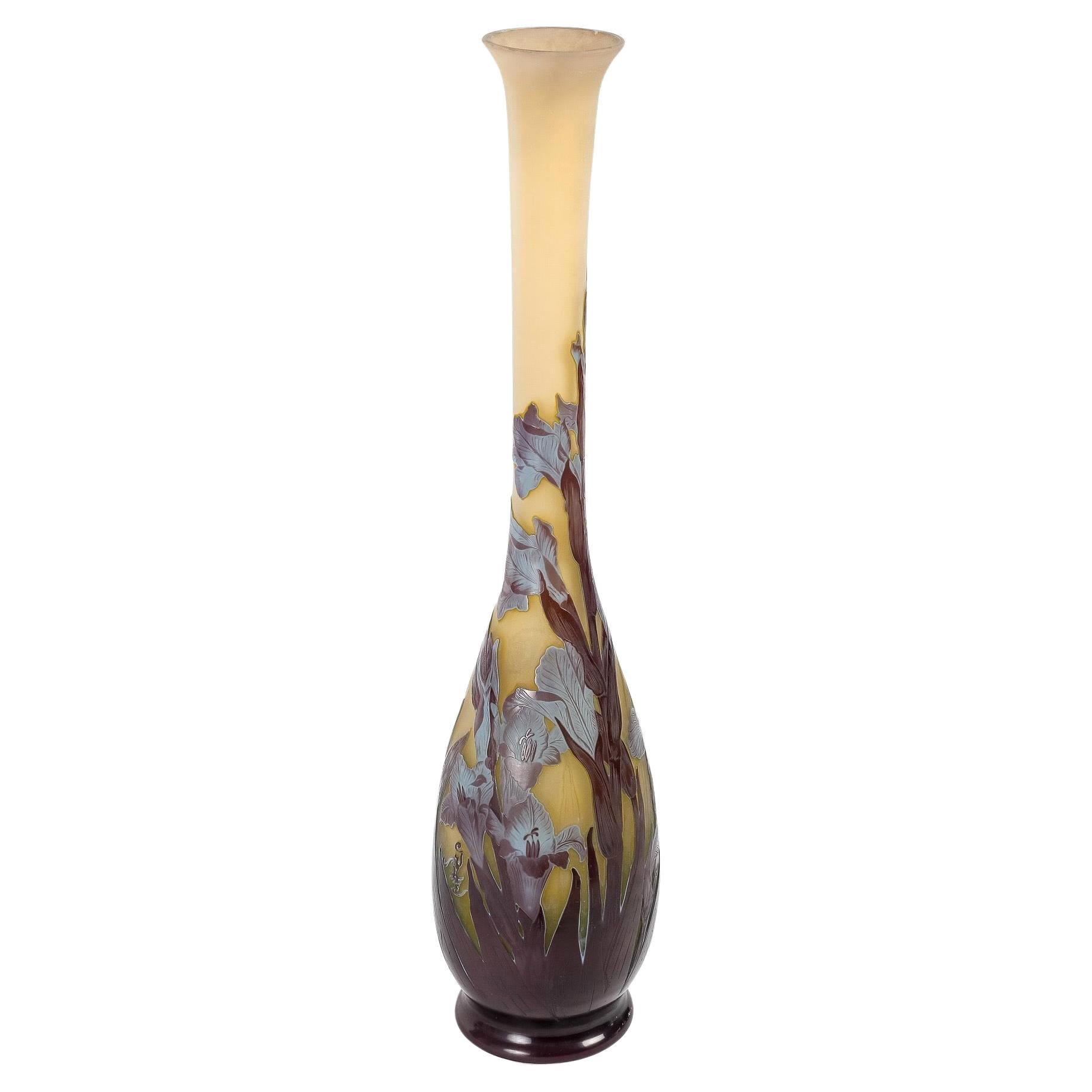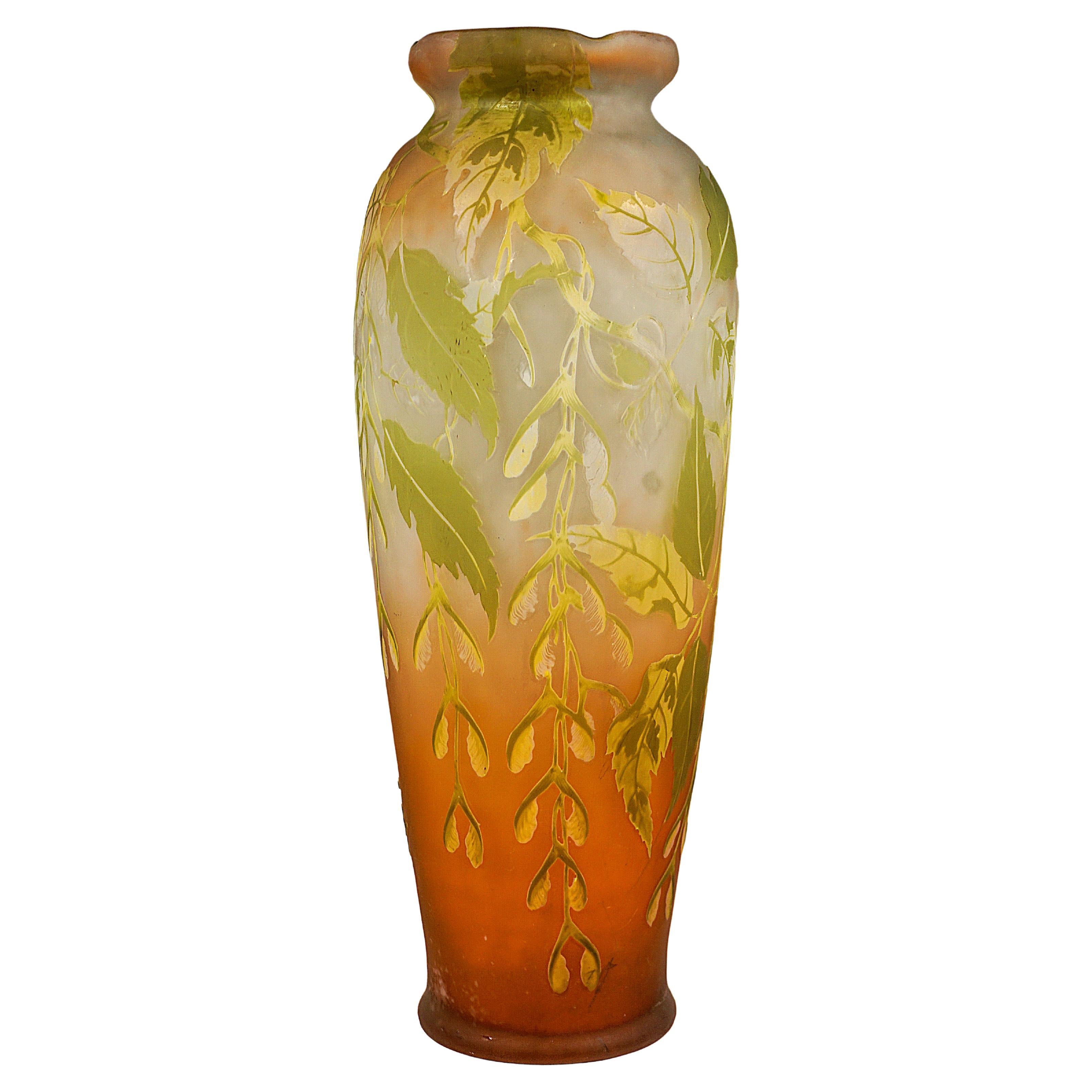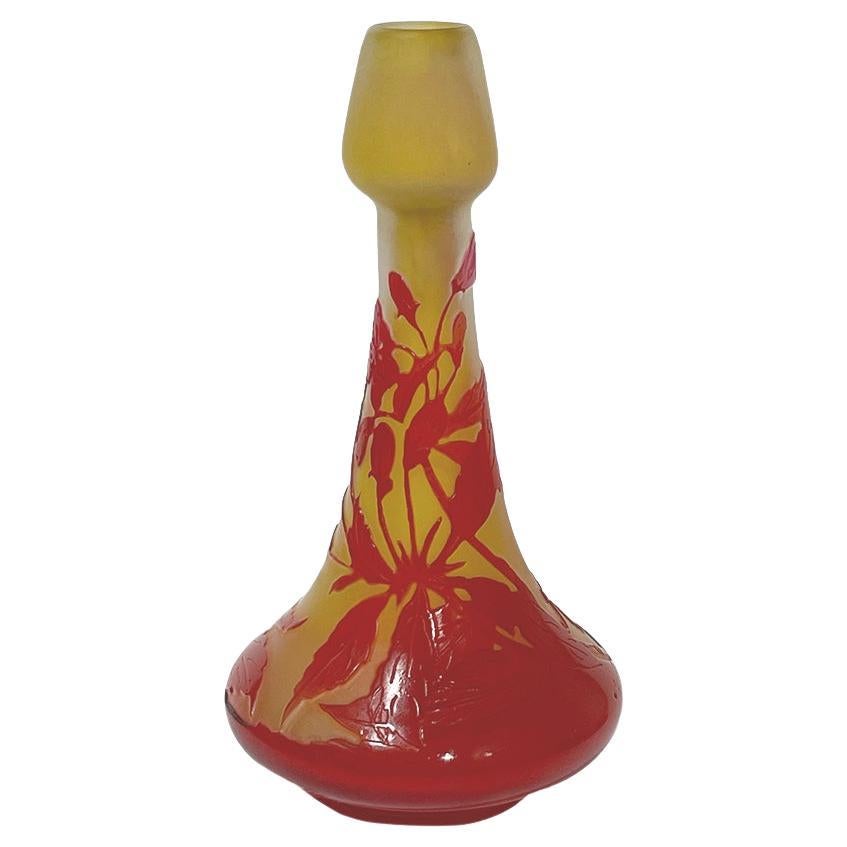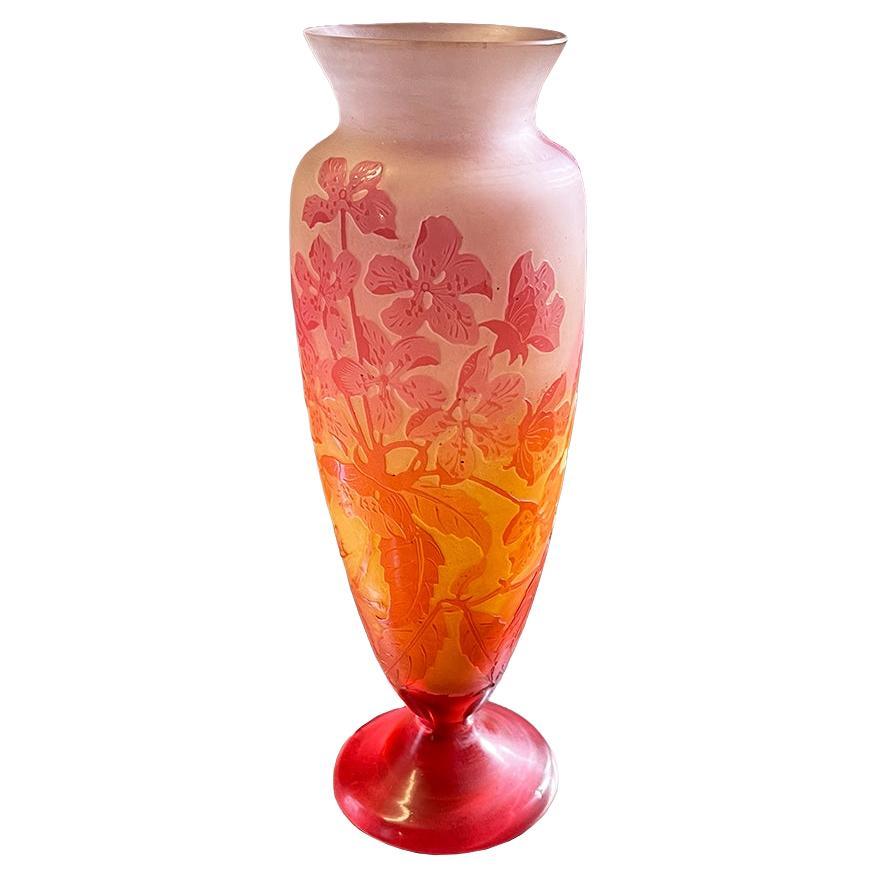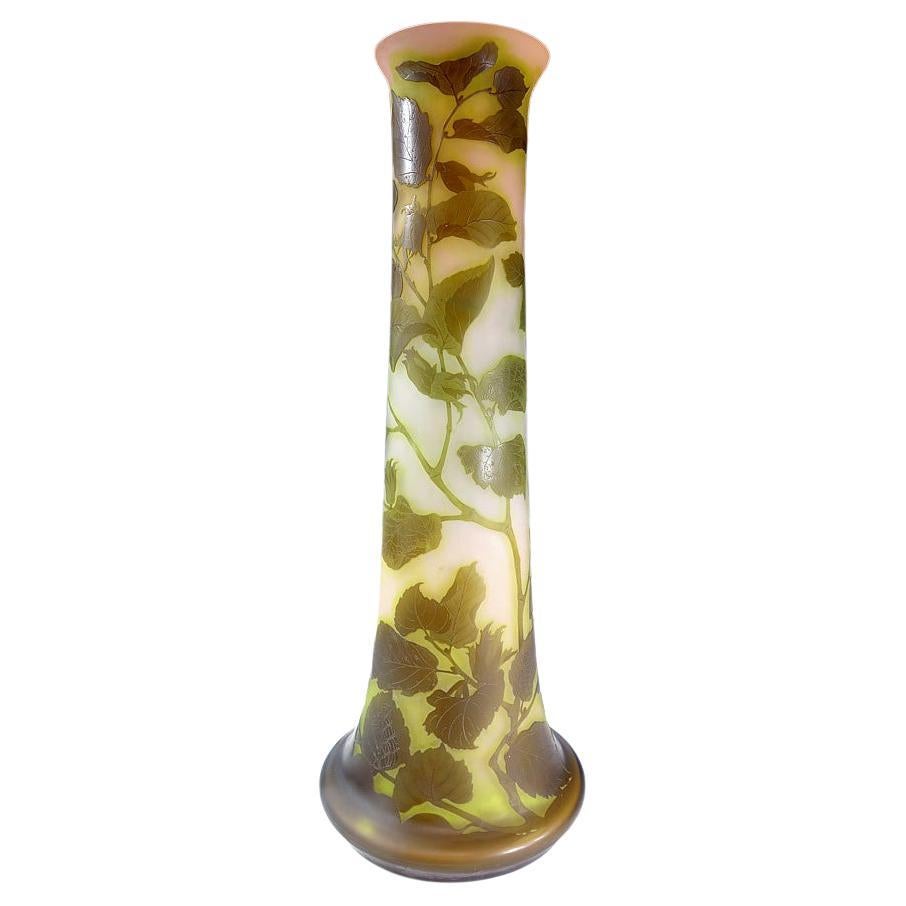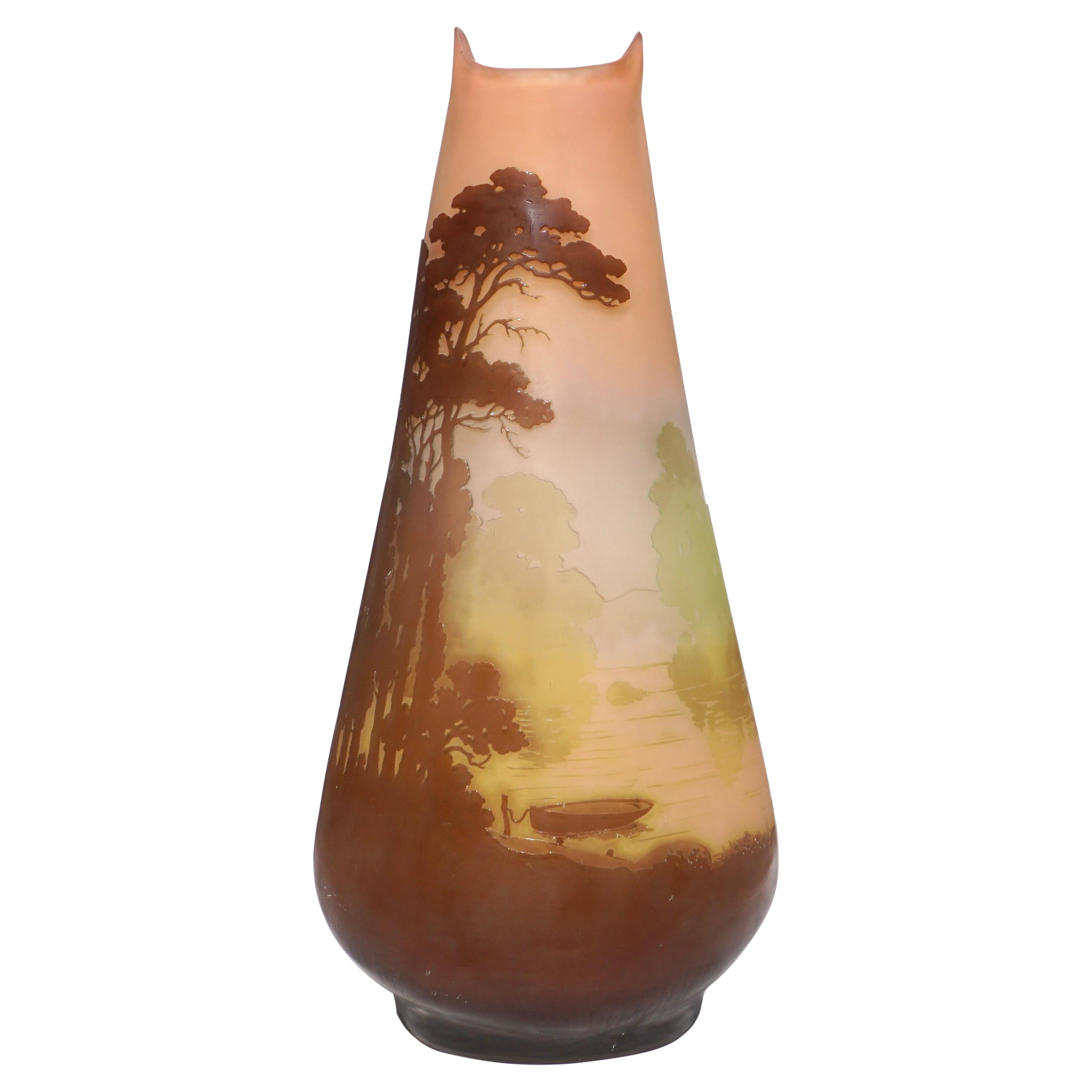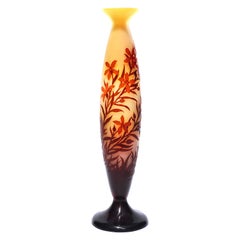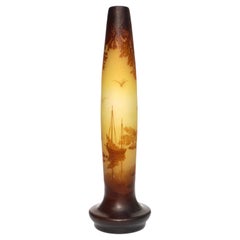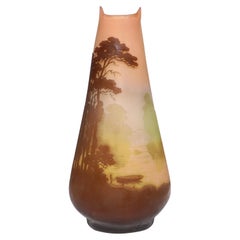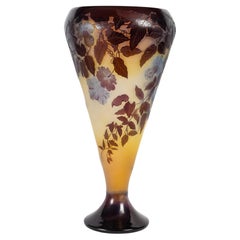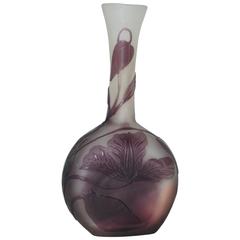
Emile Galle French Cameo Vase, circa 1900
View Similar Items
Want more images or videos?
Request additional images or videos from the seller
1 of 5
Emile Galle French Cameo Vase, circa 1900
About the Item
- Creator:Emile Gallé (Manufacturer)
- Dimensions:Height: 5.25 in (13.34 cm)Width: 2.75 in (6.99 cm)Depth: 1.75 in (4.45 cm)
- Style:Art Nouveau (Of the Period)
- Materials and Techniques:
- Place of Origin:
- Period:1900-1909
- Date of Manufacture:circa 1900
- Condition:Wear consistent with age and use.
- Seller Location:Dallas, TX
- Reference Number:1stDibs: LU177427791143
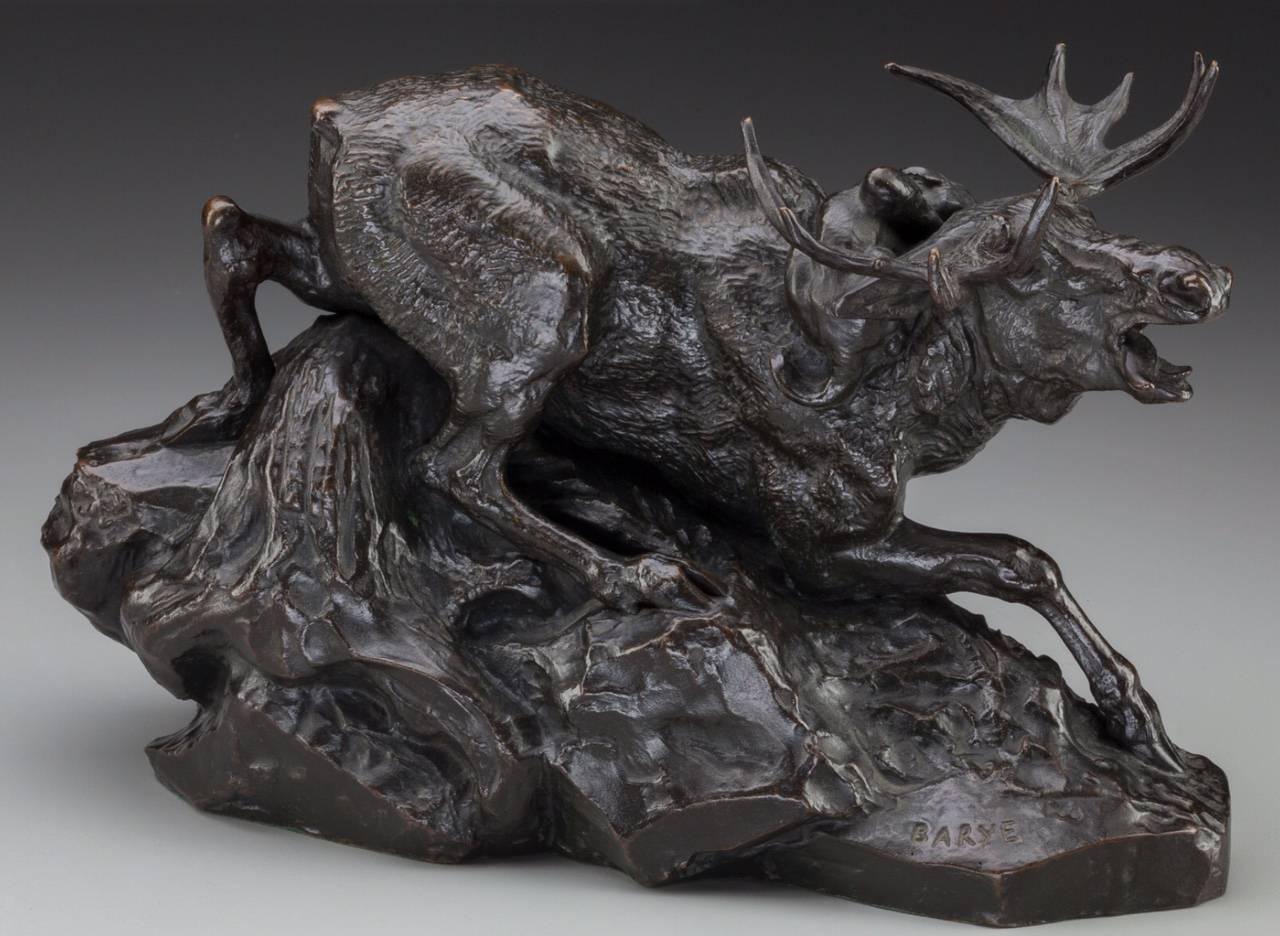
About the Seller
4.9
Gold Seller
These expertly vetted sellers are highly rated and consistently exceed customer expectations.
Established in 2000
1stDibs seller since 2015
403 sales on 1stDibs
Typical response time: 1 hour
More From This SellerView All
- Emile Gallé Cameo VaseBy Emile GalléLocated in Dallas, TXEmile Gallé (French, 1946-1904) Brand new to my vast collection of Galle and my guess is it will be acquired very fast. A spectacular mint condition rare floral tall galle vase for sure to elevate your cameo glass collection. Window pane flowers delicately carved and acid etched to perfection. I personally think this particular vase was done by Paul Nicolas in the D’argental manner as only he could carve a vase like this to perfection. Don’t let it get away! Signed in cameo: “Galle” Measures: Height 14.2 inches (35 cm) Diameter 4 inches (10 cm) Condition: Mint AVANTIQUES is dedicated to providing an exclusive curated collection of Fine Arts, Paintings, Bronzes, Asian treasures, Art Glass and Antiques. Our inventory represents time-tested investment quality items with everlasting decorative beauty. We look forward to your business and appreciate any reasonable offers. All of our curated items are vetted and guaranteed authentic and as described. Avantiques only deals in original antiques and never reproductions. We stand behind our treasures with a full money back return if the items are not as described. Emile Gallé (8 May 1846 in Nancy – 23 September 1904 in Nancy) was a French artist and designer who worked in glass, and is considered to be one of the major innovators in the French Art Nouveau movement. He was noted for his designs of Art Nouveau glass art and Art Nouveau furniture, and was a founder of the École de Nancy or Nancy School, a movement of design in the city of Nancy, France. Gallé born on 4 March 1846 in the city of Nancy, France. His father, Charles Gallé, was a merchant of glassware and ceramics who had settled in Nancy in 1844, and his father-in-law owned a factory in Nancy which manufactured mirrors. His father took over the direction of his mother's family business, and began to manufacture glassware with a floral design. He also took over a struggling faience factory and began make new products. The young Gallé studied philosophy and natural science at the Lycée Imperial in Nancy. At the age of sixteen he went to work for the family business as an assistant to his father, making floral designs and emblems for both faience and glass. In his spare time he became an accomplished botanist, studying with D.A. Godron, the director of the Botanical Gardens of Nancy and author of the leading textbooks on French flora. He collected plants from the region and from as far away as Italy and Switzerland. He also took courses in painting and drawing, and made numerous drawings of plants, flowers, animals and insects, which became subjects of decoration. At the age of sixteen he finished the Lycée in Nancy and went to Weimar in Germany from 1862-1866 to continue his studies in philosophy, botany, sculpture and drawing. In 1866, to prepare himself to inherit the family business, he went to work as an apprentice at the glass factory of Burgun and Schwerer in Meisenthal, and made a serious study of the chemistry of glass production. Some of his early glass and faience works for the family factory at Saint-Clémont were displayed at the 1867 Paris Universal Exposition. In early 1870 he designed a complete set of dishware with a rustic animal designs for the family enterprise. During this time he became acquainted with the painter, sculptor and engraver Victor Prouvé, an artist of the romantic "troubadour" style, who became his future collaborator in the Nancy School. He enlisted for military service in the Franco-Prussian War in 1870, then was demobilised after the disastrous French defeat in 1871 and the French loss to Germany of much of the province of Lorraine, including Meisenthal where he done his apprenticeship. Thereafter the Cross of Lorraine, the patriotic symbol of the region, became part of his signature on many of his works of art. After his demobilization Gallé went to London, where he represented his father at an exhibition of the arts of France, then to Paris, where he remained for several months, visiting the Louvre and Cluny Museum, studying examples of ancient Egyptian art, Roman glassware and ceramics, and especially early Islamic enamelled...Category
Antique Early 1900s French Art Nouveau Vases
MaterialsArt Glass
Sold$4,400 - Monumental Emile Galle French Cameo Sailboat VaseBy Emile GalléLocated in Dallas, TXEmile Galle (French 1846-1904) A lovely two color cameo vase with a yellow background featuring a lake scene with boats, trees and birds. The detail and fineness of the acid etchi...Category
Antique Early 1900s French Art Nouveau Vases
MaterialsArt Glass
- Large Emile Galle Scenic Cameo VaseBy Emile GalléLocated in Dallas, TXEmile Galle scenic wheel carved and acid etched cameo vase. A beautiful and tall cameo vase by Galle. The 18 - 1/2” tall vase has a background of muted yellow glass near the base, which progresses to blue/gray at mid-vase, and then peach towards the top. Brown, cameo cut trees are generously displayed across the body of the vase, with the addition of a boat in the lake. Signed "Galle". Dimensions: 18 - 1/2” x 10” x 8”. Condition: Very good Émile Gallé (8 May 1846 in Nancy – 23 September 1904 in Nancy) was a French artist and designer who worked in glass, and is considered to be one of the major innovators in the French Art Nouveau movement. He was noted for his designs of Art Nouveau glass art and Art Nouveau furniture, and was a founder of the École de Nancy or Nancy School, a movement of design in the city of Nancy, France. Gallé born on 4 March 1846 in the city of Nancy, France. His father, Charles Gallé, was a merchant of glassware and ceramics who had settled in Nancy in 1844, and his father-in-law owned a factory in Nancy which manufactured mirrors. His father took over the direction of his mother's family business, and began to manufacture glassware with a floral design. He also took over a struggling faience factory and began manufacturing new products. The young Gallé studied philosophy and natural science at the Lycée Imperial in Nancy. At the age of sixteen he went to work for the family business as an assistant to his father, making floral designs and emblems for both faience and glass. In his spare time he became an accomplished botanist, studying with D.A. Godron, the director of the Botanical Gardens of Nancy and author of the leading textbooks on French flora. He collected plants from the region and from as far away as Italy and Switzerland. He also took courses in painting and drawing, and made numerous drawings of plants, flowers, animals and insects, which became subjects of decoration. At the age of sixteen he finished the Lycée in Nancy and went to Weimar in Germany from 1862–1866 to continue his studies in philosophy, botany, sculpture and drawing. In 1866, to prepare himself to inherit the family business, he went to work as an apprentice at the glass factory of Burgun and Schwerer in Meisenthal, and made a serious study of the chemistry of glass production. Some of his early glass and faience works for the family factory at Saint-Clémont were displayed at the 1867 Paris Universal Exposition. In early 1870 he designed a complete set of dishware with a rustic animal designs for the family enterprise. During this time he became acquainted with the painter, sculptor and engraver Victor Prouvé, an artist of the romantic "troubadour" style, who became his future collaborator in the Nancy School. He enlisted for military service in the Franco-Prussian War in 1870, then was demobilised after the disastrous French defeat in 1871 and the French loss to Germany of much of the province of Lorraine, including Meisenthal where he had done his apprenticeship. Thereafter the Cross of Lorraine, the patriotic symbol of the region, became part of his signature on many of his works of art. After his demobilization Gallé went to London, where he represented his father at an exhibition of the arts of France, then to Paris, where he remained for several months, visiting the Louvre and Cluny Museum, studying examples of ancient Egyptian art, Roman glassware and ceramics, and especially early Islamic enamelled...Category
Antique Early 1900s French Art Nouveau Vases
MaterialsArt Glass
- Monumental Emile Galle 23" Wisteria Vase, circa 1900By Emile GalléLocated in Dallas, TXEmile Galle acid etched overlay and cameo glass Vase depicting wisteria and foliage in lavender with yellow and pink. This is a very large and heavy monumental 23 inch Galle vase; ve...Category
Antique Early 1900s French Art Nouveau Vases
MaterialsArt Glass
- Emile Galle Art Nouveau Cameo Floral VaseBy Emile GalléLocated in Dallas, TXEmile Galle wheel carved and acid etched cameo glass vase. This particular case has killer colors and outstanding workmanship. The pink and green combination on the cream background ...Category
Antique Early 1900s French Art Nouveau Vases
MaterialsArt Glass
- Emile Galle Art Nouveau Cameo Banjo VaseBy Emile GalléLocated in Dallas, TXEmile Galle Cameo Glass Soliflore Vase Circa 1900, Art Nouveau Condition: Mint Four colored wheel carved acid etched and cameoed layered glass. Height: 6.6 Inches Width: 3.5 Inches ...Category
Antique Early 1900s French Art Nouveau Vases
MaterialsArt Glass
Sold$1,200
You May Also Like
- Emile Galle Cameo Glass Vase 1900By Emile GalléLocated in Autonomous City Buenos Aires, CABAoverlaid and acid-etched with pendant flowers and leaves signed in cameo Gallé This beautiful glass vase is an authentic vase due to the petal-shaped mouth opening. very attractive...Category
Antique Early 1900s French Art Deco Vases
MaterialsGlass, Blown Glass, Art Glass
- Émile Gallé (1846-1904), Impressive Cameo Glass Vase "Bignones" circa 1900By Emile GalléLocated in Saint-Ouen, FRÉmile Gallé (1846-1904) Impressive Gallé French Cameo Glass Vase Large vase cone shape on pedestal Cased glass, opalescent, colorless, yellow and blue, acid-etched design with "Big...Category
Vintage 1910s French Art Nouveau Glass
MaterialsArt Glass
- Émile Gallé (1846-1904), Large Cameo Glass Vase "Gladioli" circa 1900By Emile GalléLocated in Saint-Ouen, FRÉmile Gallé (1846-1904), Art Nouveau Cameo Glass Vase « Gladioli Flowers » Large piriform vase on heel with long collar in dark blue and blue multi-layered glass Cased glass, opales...Category
Antique Early 1900s French Art Nouveau Glass
MaterialsArt Glass
- Large Émile Gallé Art Nouveau Cameo Vase, Ash-Maple Decor, France, Circa 1900By Emile GalléLocated in Vienna, ATBaluster-shaped vase body on a slightly flared, flush base, the wall tapering upwards, the soft shoulders constricted to form a short neck piece with a slightly flared, highly emboss...Category
Antique Early 1900s French Art Nouveau Glass
MaterialsGlass
- Émile Gallé Miniature Cameo Vase, Art Nouveau, Ca 1900By Emile GalléLocated in Delft, NLÉmile Gallé miniature Cameo vase, Art Nouveau, ca 1900 Émile Gallé (Nancy, 1846 –1904) was a French glassmaker and furniture designer Émile Gallé 7...Category
Early 20th Century French Art Nouveau Vases
MaterialsGlass
- Émile Gallé small Cameo vase, Art Nouveau, ca 1900By Emile GalléLocated in Delft, NLÉmile Gallé small Cameo vase, Art Nouveau, ca 1900 Émile Gallé (Nancy, 1846 –1904) was a French glassmaker and furniture designer Émile Gallé 20 cm hig...Category
Early 20th Century French Art Nouveau Vases
MaterialsGlass


